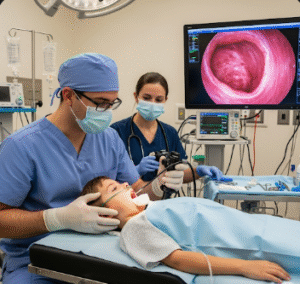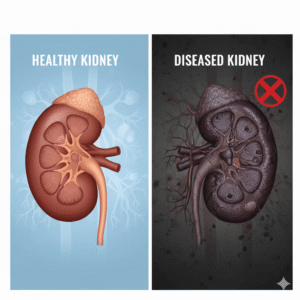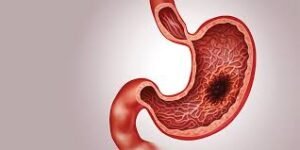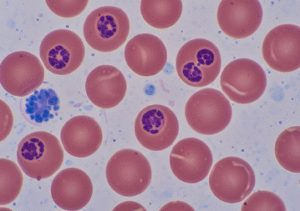What it is
Endometriosis is a chronic condition where tissue similar to the lining of the uterus (endometrium) grows outside the uterus. These abnormal tissue implants may develop on the ovaries, fallopian tubes, pelvic lining, or other organs.
✔️ Symptoms: Severe menstrual cramps, pelvic pain, heavy bleeding, pain during intercourse, infertility, and chronic fatigue.
✔️ Causes: Exact cause unknown, but linked to hormonal, immune, and genetic factors.
✔️ Prevalence: Affects about 1 in 10 women of reproductive age worldwide.
➡️ In Korea, endometriosis management is offered at gynecology clinics, women’s hospitals, and university medical centers using both advanced surgical techniques and holistic care.
Why it’s done
Management of endometriosis is important because it:
🔹 Reduces pain and improves quality of life.
🔹 Prevents progression of the disease and complications like adhesions.
🔹 Supports fertility for women planning pregnancy.
🔹 Minimizes long-term risks such as ovarian cysts or endometriosis-associated cancers.
🔹 Improves emotional health, as chronic pain often causes depression or anxiety.
💡 Highlight: Endometriosis is not just painful periods—it is a serious medical condition requiring long-term management.
Alternatives
While standard medical and surgical treatments are common, women in Korea may consider alternatives:
➡️ Lifestyle changes – exercise, stress management, and anti-inflammatory diets.
➡️ Pain management – hot compresses, relaxation techniques, and physical therapy.
➡️ Traditional Korean medicine – acupuncture and herbal remedies for pain relief and cycle regulation.
➡️ Nutritional supplements – omega-3s, vitamin D, and antioxidants.
➡️ Observation only – for mild, symptom-free cases.
⚠️ Note: Alternatives may help with pain, but medical management is necessary to slow disease progression and preserve fertility.
Preparation
Before starting treatment in Korea, preparation involves:
✔️ Detailed medical history – symptoms, family history, fertility goals.
✔️ Cycle tracking – severity and timing of pain and bleeding.
✔️ Physical exam – pelvic exam by a gynecologist.
✔️ Diagnostic tests – pelvic ultrasound, MRI, or laparoscopy for definitive diagnosis.
✔️ Blood work – hormone levels and anemia check.
💡 Tip: Korean doctors recommend laparoscopy not only for diagnosis but also as a treatment tool to remove endometriotic lesions.
How it’s done
Management of endometriosis in Korea follows a multi-step approach:
- Medication for symptom control
- NSAIDs (ibuprofen, naproxen) for pain relief.
- Hormonal therapy (birth control pills, progestin IUDs, injections, implants) to reduce bleeding and slow endometrial growth.
- GnRH agonists/antagonists – induce temporary menopause to shrink lesions.
- Surgical treatments
- Laparoscopic excision or ablation – removal or destruction of endometriotic tissue.
- Ovarian cystectomy – for endometriomas (chocolate cysts).
- Hysterectomy – last resort for severe cases where fertility is no longer desired.
- Fertility management
- Ovulation induction or IVF (In-vitro fertilization) for women with infertility.
- Preservation of ovarian function during surgery to protect fertility.
- Complementary therapies
- Acupuncture and herbal medicine, commonly integrated in Korea for pain and hormonal balance.
- Counseling and support programs for mental health.
💡 Highlight: Korean hospitals often combine laparoscopic expertise with fertility preservation strategies, ensuring both pain relief and future pregnancy potential.
Recovery
Recovery varies depending on treatment:
✔️ Medication therapy – symptom relief within 1–3 cycles.
✔️ Laparoscopic surgery – hospital stay of 1–2 days, full recovery in 1–3 weeks.
✔️ Fertility treatments – require ongoing monitoring.
✔️ Holistic care – gradual but sustainable improvement with acupuncture, nutrition, and stress management.
When to revisit a doctor:
➡️ Persistent or worsening pain despite treatment.
➡️ Recurrence of symptoms after surgery.
➡️ Difficulty conceiving after 6–12 months of trying.
➡️ Side effects from medication (mood changes, hot flashes, bone loss).
💡 Important: Endometriosis often requires long-term management and follow-up care. Korean clinics emphasize regular monitoring and tailored treatment adjustments.
Treatment option in Korea
Korea offers comprehensive and advanced management options:
⭐ University hospitals with world-class laparoscopic surgeons.
⭐ Fertility clinics specializing in IVF and endometriosis-related infertility.
⭐ Integration of Western medicine and Korean traditional medicine for pain and cycle regulation.
⭐ Affordable treatment costs compared to many Western countries.
⭐ Multilingual services in major hospitals for foreign patients.
💡 Highlight: Korea’s healthcare system combines surgical precision, fertility expertise, and holistic approaches, making it a top choice for endometriosis management.
Key Highlights
✔️ Endometriosis causes chronic pelvic pain, infertility, and heavy periods.
✔️ Diagnosis often requires laparoscopy, which can also treat lesions.
✔️ Treatment includes medications, surgery, fertility support, and traditional therapies.
✔️ Recovery depends on treatment, from weeks after surgery to ongoing symptom control.
✔️ Korean clinics provide advanced, affordable, and integrative care.













